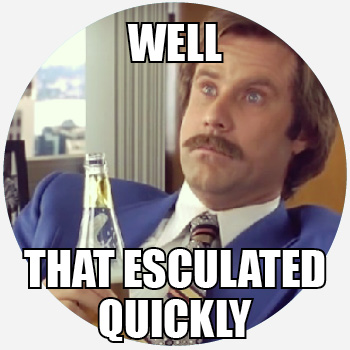cactusgarrett
Well-Known Member
I'm curious about a reference to the use of "dark malt" in a traditional weissebier that's NOT a dunkels. In Hieronymus' "Brewing with Wheat", page 95 includes info from Josef Schneider as it pertains to the brewing of Schneider Weisse:
"His Weizenbier includes 60% wheat malt... 12% dark Munich, 3% acidulated malt, 10% Cara-hell, 10% dark malt (600 EBC) and 5% Pilsener malt."
I'm curious as to what "dark malt" would be. 600 EBC (best I can figure) works out to ~225°L, and it seems anything darker would be somewhat out of place (too dark or roasty) for a hefeweizen. A googlez for "german dark malt" only returns results related to dark munich or dark wheat.
Any thoughts on what this could be or what a reasonable substitute would be? Even using something like Special B (10% at 150 SRM) pushes the overall beer to 16 SRM, well beyond the 6 SRM upper threshold for the style.
"His Weizenbier includes 60% wheat malt... 12% dark Munich, 3% acidulated malt, 10% Cara-hell, 10% dark malt (600 EBC) and 5% Pilsener malt."
I'm curious as to what "dark malt" would be. 600 EBC (best I can figure) works out to ~225°L, and it seems anything darker would be somewhat out of place (too dark or roasty) for a hefeweizen. A googlez for "german dark malt" only returns results related to dark munich or dark wheat.
Any thoughts on what this could be or what a reasonable substitute would be? Even using something like Special B (10% at 150 SRM) pushes the overall beer to 16 SRM, well beyond the 6 SRM upper threshold for the style.










![Craft A Brew - Safale BE-256 Yeast - Fermentis - Belgian Ale Dry Yeast - For Belgian & Strong Ales - Ingredients for Home Brewing - Beer Making Supplies - [3 Pack]](https://m.media-amazon.com/images/I/51bcKEwQmWL._SL500_.jpg)















































